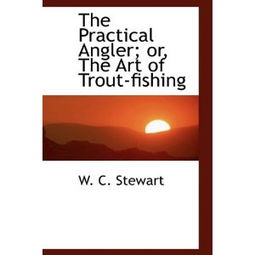Content:
In the serene landscapes where farmers tend to their crops, a tranquil pastime often unfolds – fishing. For many farmers, this hobby is not just a way to unwind but also a means to supplement their livelihood. If you're a farmer looking to perfect your fishing skills or simply curious about how your fellow rural dwellers enjoy their leisure time, this article will delve into the art of fishing, offering a comprehensive guide accompanied by a helpful video tutorial.
Understanding the Basics
Before diving into the fishing techniques, it's essential to understand the basics. Fishing is an activity that requires patience, knowledge of the environment, and the right equipment. Here are some fundamental aspects to consider:

Choosing the Right Equipment: A good fishing rod, reel, and line are the cornerstone of your fishing gear. For farmers, who often have a natural connection with the outdoors, selecting equipment that is durable and easy to handle is crucial.
Choosing the Right Location: Farmers often have access to ponds, streams, or rivers on their property. However, understanding the habits of fish in these areas is key to successful fishing. Look for areas with good water flow, vegetation, or structures that fish might use for cover.
Understanding Fish Behavior: Fish are creatures of habit, and understanding their behavior can greatly increase your chances of a successful catch. Study the species you're targeting and learn about their feeding patterns, migration, and spawning habits.
Techniques for Different Types of Fishing
Bait Fishing: This is the most common method used by farmers. It involves using bait to attract fish. Here are some tips:
- Choose the Right Bait: The type of bait you use depends on the species you're targeting. Live bait, such as worms or minnows, can be highly effective.
- Presentation: The way you present your bait can make a significant difference. For example, if you're fishing for bass, you might want to cast your bait just beyond the fish's striking zone.
- Patience: Once you've cast your line, be patient. Fish may take a few moments to notice the bait.
Fishing with Lures: Lures are artificial baits designed to mimic the movement of natural prey. Here's how to use them effectively:
- Selecting the Right Lure: Different lures are designed to attract different types of fish. Choose a lure that matches the size and movement of the fish you're targeting.
- Rigging the Lure: Ensure your lure is properly rigged to allow for natural movement in the water.
- Presenting the Lure: Use different retrieves and presentations to entice fish. Experiment with various techniques until you find what works best.
Fly Fishing: This is a more advanced technique that involves casting a weighted fly line and using a fly rod. Here are some tips:
- Fly Selection: The fly you choose should mimic the insects or other prey that fish in your area feed on.
- Casting: Practice your casting technique to ensure you can place your fly precisely where you want it.
- Leaders and Tippets: Use a leader and tippet that are appropriate for the fish you're targeting and the conditions you're fishing in.
The Role of Technology
In recent years, technology has made fishing more accessible and enjoyable. A fishing technique video can be a valuable resource for farmers looking to improve their skills. Here's how to make the most of a fishing technique video:
- Watch and Learn: Pay close attention to the technique being demonstrated. Note the details of the cast, the retrieval, and the way the angler interacts with the fish.
- Practice: Once you've watched the video, find a quiet spot to practice the technique. Remember, practice makes perfect.
- Seek Feedback: If possible, watch the video with an experienced angler who can provide feedback on your technique.
Conclusion
Fishing is a rewarding hobby that can be enjoyed by farmers of all skill levels. By understanding the basics, mastering different techniques, and utilizing resources like fishing technique videos, you can enhance your fishing experience. Whether you're aiming to catch a few fish for dinner or simply to enjoy the peace and tranquility of the water, the art of fishing is a pastime that can enrich your life as a farmer.
Remember, the key to successful fishing is patience, persistence, and a willingness to learn. With the right techniques and a bit of practice, you'll be well on your way to becoming a skilled angler, reaping the rewards of your time on the water. Happy fishing!












